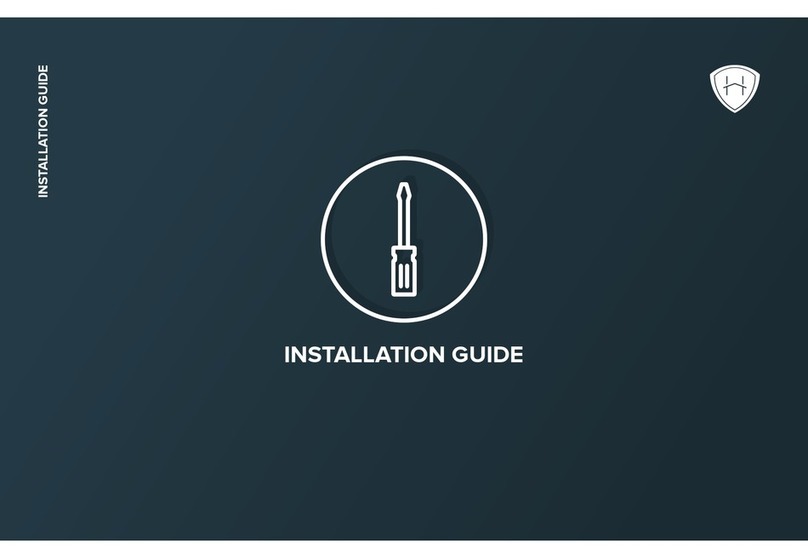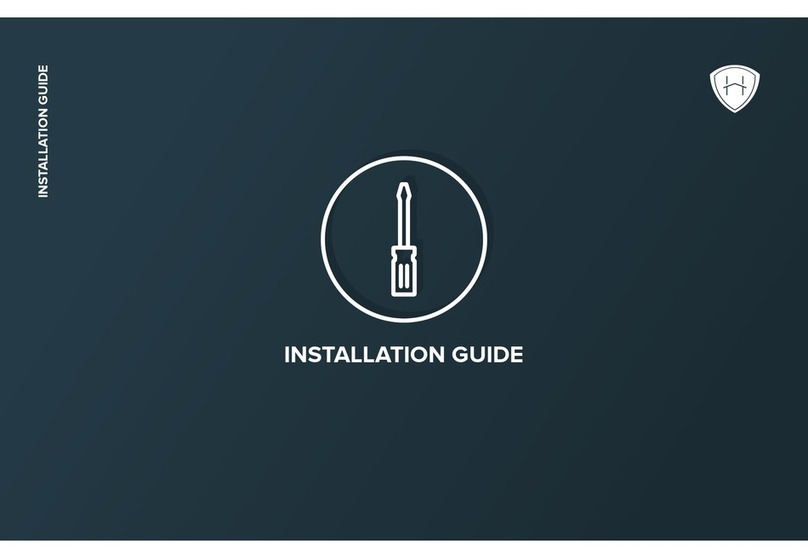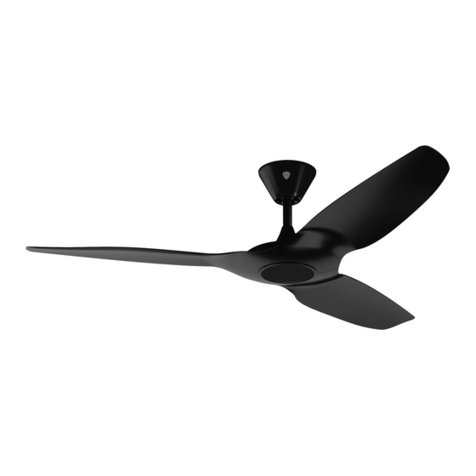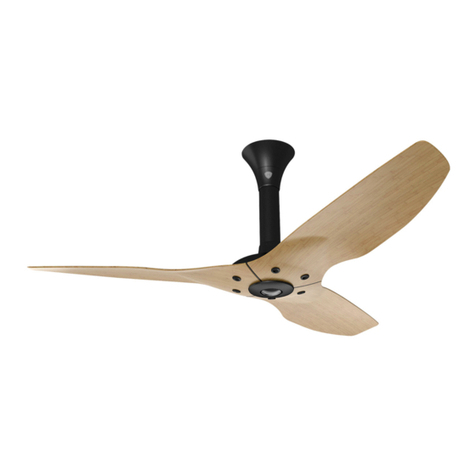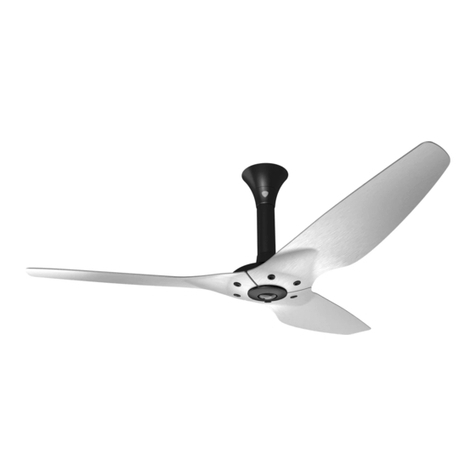©2013 DELTA T CORP. ALL RIGHTS RESERVED.
ii
IMPORTANT SAFETY INSTRUCTIONS
Read and save these instructions prior to installing and operating your Haiku. Retain
this installation guide for maintenance and troubleshooting information. If you have
further questions, contact Haiku Customer Service at www.haikufan.com/service.
WARNING: To reduce the risk of fire, electric shock, and serious bodily injury to persons, observe the
following:
• Installation work and electrical wiring must be done by qualified person(s) in accordance with all
applicable codes and standards.
• When cutting or drilling into ceiling, do not damage electrical wiring and other hidden utilities.
• Use this fan only in the manner intended by the manufacturer.
CAUTION: The installation of this fan must be in accordance with the requirements specified in this
installation manual and with any additional requirements set forth by the national electrical code (NEC),
ANSI/NFPA 70-2008, and all local codes. Code compliance is ultimately YOUR responsibility!
WARNING: If installing the fan in Australia, a licensed electrician must perform the electrical installation.
CAUTION: Exercise caution and common sense when powering the fan. Do not connect the fan to a
damaged power source. Do not attempt to resolve electrical malfunctions or failures on your own.
WARNING: The fan must be used with the supplied remote control. Other parts cannot be substituted.
CAUTION: When service or replacement of a component in the fan requires the removal or
disconnection of a safety device, the safety device must be reinstalled or remounted as previously
installed.
WARNING: Power must be disconnected before installation and servicing, cleaning, and other user-
maintenance. Failure to disconnect power creates risk of fire, electric shock, and serious bodily injury.
CAUTION: The product warranty will not cover equipment damage or failure that is caused by
improper installation or operation.
CAUTION: The fan must be mounted a minimum of 2.4 m from the floor and 1 m from the nearest wall.
The ceiling should be stable with no shaking, high vibrations or heavy impacts.
WARNING: Do not install the fan in an environment that is excessively dusty, conductive, corrosive, or
gas-filled, is exposed to open flames (e.g., gas-burning stoves), is near strong chemicals or solvents, or
where there is excessive heat, shock, or vibration.
WARNING: Do not bend the airfoils when installing or servicing the fan. Do not insert foreign objects in
between the rotating fan airfoils.
CAUTION: This fan is not intended for use by persons (including children) with reduced physical,
sensory, or mental capabilities, or lack of experience and knowledge, unless they have been given
supervision or instruction concerning the use of the fan by a person responsible for their safety.
Children should be supervised to ensure that they do not play with the fan.
WARNING: Before installing or servicing the fan, ensure power is disconnected.
CAUTION: Haiku (K3150-S1) is rated for use in damp environments and can be operated indoors or
outdoors. Haiku Bamboo (S3150-S1) is not rated for damp environments and must be operated indoors
only.
CAUTION: The fan will begin rotating when power is applied.






